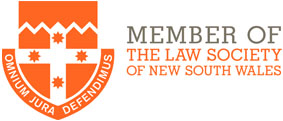WHAT IS A GRANNY FLAT RIGHT?
You can have a granny flat interest in any kind of dwelling, not just those typically referred to as a “granny flat” (a separate, self-contained building or living area attached to a home or property). It must be a private residence and your principal home.
You cannot however, have a granny flat interest in a property in which you have legal ownership (or your partner or a company or trust that you control).
A “granny flat right” or a “granny flat interest” is where you pay for the right to live in a specific home for life.
Granny flat interests are usually family arrangements providing company and support for older people, but they don’t have to be for social security purposes. They are created when you exchange assets, money or both for a right to live in someone else’s property for life. For example, you could:
- transfer ownership of your home but keep a lifelong right to live there or in another private property; or
- transfer assets, including money, in return for a lifelong right to live in a home.
The granny flat right only lasts for your lifetime. It’s not part of your estate when you die, so you can’t give it in your will as part of your estate plan.
DOCUMENTATION
A granny flat right does not have to be in writing however, given that amounts that can be paid for a granny flat right can be significant and they are usually funded by significant events like the sale of a family home, it can be a very good idea to get a lawyer to draw up a legal document so you have proof of what you and the owner have agreed to in relation to the granny flat arrangement.
A Granny Flat Right Agreement can include many things in addition to the amount paid, such as what happens if the property is sold, whether the right can be transferred to another property or what you may get back if you give up your granny flat right, as well as what regular contributions for rent, maintenance or outgoings (insurance, rates, phone etc) may have been agreed.
GIFTING RULES & THE REASONABLENESS TEST
In Centrelink/Department of Human Services terms, a “deprived asset”, also known as “gifting”, is where you give away an asset without getting something of at least equal value in return.
The value of a granny flat right is the amount paid, or the value of the assets transferred, in return for a life interest or life estate in a property.
Centrelink may apply the “reasonableness test” in determining the amount that should be paid for a granny flat right. This test is based on a formula based on a conversation factor relating to your age next birthday and the couple age pension rate.
If the amount paid is equal to or below the value determined by the reasonableness test, then there is no deprivation. However, if the amount you paid for the granny flat right is more than the cost or value of the granny flat right, the excess amount paid is considered to be a “deprived asset”.
This could affect the amount of pension you are paid.
Depending on the value of the granny flat right, you may be considered as a home owner for Centrelink (assets test) assessment purposes, even though you don’t own the home you have the granny flat right in.
WANT MORE INFORMATION?
Speak to us about how we can assist you to draft a Granny Flat Right Agreement to document your arrangements regarding the use and occupation of part of your home. We will liaise with your financial planner to cover off the financial and social security aspects as there may be other things you can do like contribute proceeds of sale to super.
Craig Pryor is principal solicitor at McKillop Legal. For further information in relation to documenting co-habitation and property use agreements and estate planning matters generally, contact Craig Pryor on (02) 9521 2455 or email craig@mckilloplegal.com.au.
This information is general only and is not a substitute for proper legal advice. Please contact McKillop Legal to discuss your needs.





